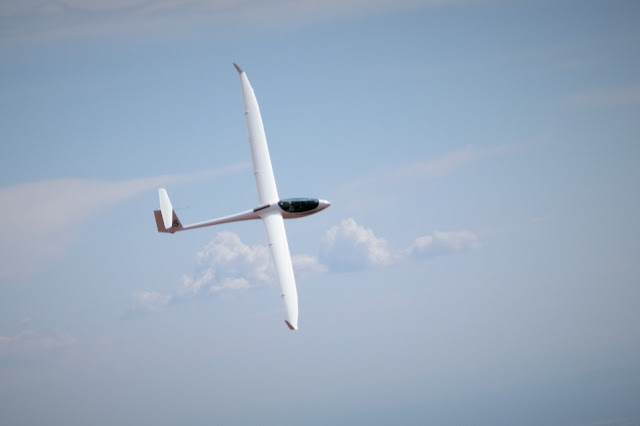The 18 m class was assigned a 581 km task that took us south to the hills, then west across a large valley into some more hills, then 225 km north to the third turnpoint, back east and then home.
The picture shows my trace in red and another pilot's trace in blue. When looking at flight statistics compared to other faster pilots the one thing that stood out to me was that I flew 624 km to cover the 581, while the blue pilot flew only 601 km to cover the same distance. This extra distance over the task time equates to about a 5 km/hr loss in speed.
Except for the large deviation I made on the first leg, I am having trouble seeing where else I flew the extra 23 km. However, this does point out that in strong and fairly consistent conditions it is important not to deviate as is necessary in our typically weaker conditions at home. John Cochrane wrote a paper about this to analyze the loss/gain for various amounts of deviation in stronger and weaker conditions. His conclusion was that deviations typically pays off in weak conditions if you can find above average thermals by doing so. In conditions that are strong and homogeneous deviating does not pay off.
Conditions for the flight were good with 5-7 kt thermals and max thermal height of just over 10,000. I flew a working band of about 6500 - 9500 ft for most of the flight. I did see a lot of people significantly lower, but I don't know who they were, or how effective it was to push lower and wait for a stronger climb.
Today, I am taking the day off and we have the opening ceremony on Sunday, so the next flying report will be for Monday.


















